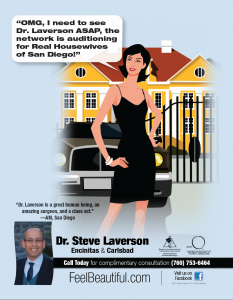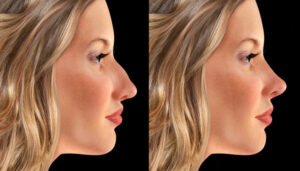
What is the difference between cosmetic surgery and plastic surgery?
Is there any difference at all, or are they the same thing? Confusion between the two is actually promoted by agenda driven forces in the marketplace, so let’s review some facts to answer that question:
Cosmetic surgery improves the appearance of the face, breasts, and body. According to the 2018 American Society of Plastic Surgeons annual plastic surgery report, more than 1.8 million cosmetic surgical procedures were performed in 2018.
The top five included:
- Breast augmentation
- Liposuction
- Nose reshaping
- Eyelid surgery
- Tummy tuck
Other examples of cosmetic surgery include:
- Buttock implants
- Labiaplasty
- Chemical peels
- Breast reduction in men
- Hair transplantation
Indications for cosmetic surgery are the desire for improvement of a particular physical attribute, and the existence of a safe, established surgical technique to accomplish the desired improvement. Cosmetic procedures are performed on normal adults who believe that improvement of their aesthetic feature(s) will promote confidence and quality of life. Cosmetic surgery is a subset or subspecialty of Plastic Surgery. Both Cosmetic Surgery and Reconstructive Surgery are included as subspecialties within the umbrella of Plastic Surgery.
What is Plastic Surgery?
The term “plastic surgery” is derived from the Greek “plastikos,” which means “to mold, to form.” Plastic surgery involves enlargement, reduction, and rearrangement of body parts to shape them and produce desired relationships, appearances, and function. The only real difference between Cosmetic and Reconstructive surgery is that cosmetic surgery is performed on normal structures and reconstructive surgery is performed on abnormal structures to restore normal relationships and appearance. Common types of reconstructive surgery are:
- Restoration after tumor removal
- Laceration repair
- Maxillofacial surgery
- Scar revision
- Hand surgery
Examples of reconstructive surgery that include cosmetic elements are:
- Breast reduction
- Breast reconstruction after mastectomy or lumpectomy
- Burn care and reconstruction of burn wounds
- Pelvic floor reconstruction
- Birth defect repair
One reason plastic surgery and cosmetic surgery are confused with one another is that surgeons certified by the American Board of Plastic Surgery are trained and qualified to do both. Cosmetic and Reconstructive surgery are subspecialties within the field of Plastic Surgery. The American Board of Plastic Surgery is the ONLY American Board of Medical Specialties (ABMS) recognized board to certify surgeons within the subspecialty of cosmetic surgery.
American Board of Plastic Surgery certification
In order to become a Diplomate of the American Board of Plastic Surgery, a doctor must first complete 5 years of pre-requisite general surgery residency training in:
- Abdominal surgery
- Oncologic/breast surgery
- Pediatric surgery
- Surgical critical care
- Surgical oncology (non-breast)
- Transplant
- Trauma management
- Vascular surgery
This is then followed by 3 years of plastic surgery training in:
- Congenital defects
- Head and neck surgery
- Craniomaxillofacial trauma
- Aesthetic surgery
- Plastic surgery of the breast
- Plastic surgery of the lower extremities
- Plastic surgery of the trunk and genitalia
- Burn reconstruction
- Microsurgical techniques applicable to plastic surgery
- Reconstruction by tissue transfer
- Surgery of benign and malignant lesions of the skin
This training includes cosmetic surgery and a range of reconstructive surgical skills as well. Many plastic surgeons go on to subspecialize in a selected area of interest. When looking for a plastic surgeon to perform cosmetic procedures, it’s important to choose one with a passion for and a focus on cosmetic surgery and aesthetic enhancement. These surgeons are generally members of the American Society of Aesthetic Plastic Surgeons (ASAPS), and listed on the ASAPS directory at surgery.org.
Dr. Laverson has an eye for aesthetics, a skilled hand, and a passion for helping his patients feel beautiful.
At Feel Beautiful Aesthetic Wellness and Plastic Surgery in San Diego, we’re proud to provide personal care and natural appearing beautiful results. As one of the top plastic surgeons in San Diego, Dr. Laverson has a reputation for precision, artistry, and respect for his patients. For 25 years, our pursuit has always been to exceed expectations. If you believe like we do that your face and body are the most valuable items you’ll ever own, but you may want to upgrade one or more areas, call to schedule a consultation with Dr. Laverson today.
We look forward to hearing from you!














